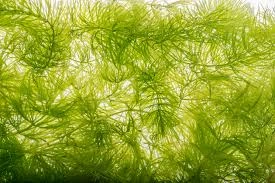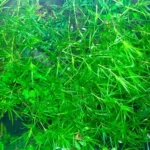
Welcome to our exploration of one of nature’s lesser-known wonders: Hornwort! These fascinating plants, belonging to the group of non-vascular plants known as bryophytes, are often overlooked in the world of botany. In this blog post, we’ll delve into 25 intriguing facts about Hornwort, from their unique reproductive methods to their ecological significance. Whether you’re a seasoned botanist or simply curious about the diversity of plant life, you’ll discover something new and captivating about these remarkable organisms. Join us as we uncover the secrets of Hornwort and appreciate the intricate beauty of our planet’s flora!
Classification: Hornworts belong to the division Anthocerotophyta, which is one of the three main groups of bryophytes, alongside mosses (Bryophyta) and liverworts (Marchantiophyta). This division includes around 100 species, characterized by their unique morphology and reproductive structures. Hornworts are distinguished from other bryophytes by their elongated sporophytes, which resemble horns, hence their common name. These plants are non-vascular, meaning they do not have specialized tissues for transporting water and nutrients, relying instead on diffusion.
Habitat: Hornworts thrive in moist environments, which are essential for their survival and reproduction. They can often be found in soil, on rocks, and in shallow water, particularly in areas that provide adequate moisture and shade. Their preference for damp habitats makes them common in tropical and temperate regions, where humidity is high. They play a crucial role in these ecosystems, helping to stabilize soil and prevent erosion, as well as providing habitat for other organisms.
Structure: The structure of hornworts is quite distinctive, featuring a thallus that can grow up to 20 cm in length. The thallus is usually flat and lobed, providing a large surface area for photosynthesis. This structure lacks the typical leaf and stem organization found in vascular plants, which is a defining characteristic of non-vascular plants. The thallus is also capable of absorbing water and nutrients directly from the environment, which is essential for their survival in the often nutrient-poor habitats they occupy.
Reproduction: Hornworts reproduce through asexual and sexual means, primarily through spores produced in elongated structures called sporophytes. These sporophytes can grow up to 5 cm tall and are typically green, allowing them to photosynthesize. The sporophyte remains attached to the thallus for its entire life cycle, which is unique among bryophytes. The production of spores occurs within a capsule at the tip of the sporophyte, which eventually releases the spores into the environment, facilitating the spread of the species.
Photosynthesis: The chloroplasts within hornworts are notable for their ability to divide independently of the cell division process. This characteristic allows hornworts to maintain a high rate of photosynthesis, which is crucial for their growth and energy needs. The presence of these chloroplasts contributes to the green coloration of the thallus, enhancing the plant’s ability to capture sunlight. This efficient photosynthetic process supports their growth in various habitats, even in conditions where light may be limited.
Symbiosis: Many hornwort species form symbiotic relationships with nitrogen-fixing cyanobacteria. This partnership is beneficial for both organisms: the cyanobacteria convert atmospheric nitrogen into a form that the hornwort can use for growth, while the hornwort provides a habitat and nutrients for the cyanobacteria. This symbiosis is particularly important in nutrient-poor environments, where hornworts can thrive by obtaining essential nutrients that would otherwise be scarce.
Distribution: Hornworts are distributed globally, with a significant presence in both tropical and temperate regions. They can be found on every continent except Antarctica, showcasing their adaptability to various environmental conditions. Their widespread distribution is indicative of their ecological resilience and ability to colonize diverse habitats, from rainforests to grasslands. This adaptability allows them to play important roles in different ecosystems, contributing to biodiversity.
Lifespan: Some hornwort species can live for several years, with sporophytes persisting for extended periods under favorable conditions. This longevity allows them to reproduce multiple times throughout their life cycle, increasing their chances of survival and colonization in their habitats. The ability to thrive for years also means they can contribute to their ecosystems over a long period, influencing soil composition and providing habitat for various organisms.
Growth Rate: Hornworts can exhibit rapid growth under optimal conditions, with some species showing growth rates of several centimeters per month. This quick growth is facilitated by their efficient photosynthetic capabilities and nutrient absorption strategies. Their ability to grow rapidly allows them to quickly colonize available space in their environment, which is crucial for competing with other plant species and establishing themselves in diverse habitats.
Color: The thalli of hornworts can range in color from green to dark green, depending on the species and environmental conditions. The variation in color is often due to differences in chlorophyll concentration and the presence of other pigments that can affect photosynthesis and protection from UV light. The green coloration is a key indicator of their health and photosynthetic activity, and it can also influence their interactions with other organisms in their ecosystems.
Water Retention: Hornworts are highly effective at retaining moisture due to their thallus structure, which has a large surface area that can absorb water directly from the environment. This ability allows them to survive in habitats that may experience fluctuations in moisture levels. Their capacity to retain water also makes them important for maintaining humidity in their ecosystems, benefiting other organisms that rely on moist conditions for survival.
Ecological Role: Hornworts play a significant role in soil formation and stabilization. Their thalli help to bind soil particles together, reducing erosion and promoting the development of a stable substrate for other plants to grow. Additionally, by contributing organic matter to the soil as they die and decompose, hornworts enhance soil fertility and structure, which is vital for the health of the ecosystems they inhabit.
Sporophyte Structure: The sporophyte of hornworts is unique among bryophytes because it is photosynthetic and remains attached to the thallus throughout its life cycle. This structure allows the sporophyte to continue producing energy through photosynthesis while also generating spores. The elongated shape of the sporophyte, which can grow up to 5 cm tall, resembles a horn, contributing to the common name “hornwort.”
Genetic Studies: Molecular studies indicate that hornworts are more closely related to liverworts than to mosses, despite their superficial similarities. This relationship has been supported by genetic analyses that reveal shared traits and evolutionary pathways. Understanding the genetic relationships among these groups helps researchers gain insights into plant evolution and the development of land plants.
Diversity: The largest genus of hornworts is Anthoceros, which includes approximately 50 species. This genus showcases a range of morphological variations and adaptations to different environments. The diversity within the genus highlights the ecological versatility of hornworts and their ability to thrive in various habitats, from moist forests to rocky outcrops.
Cultural Significance: In some cultures, hornworts have been utilized in traditional medicine, although specific uses can vary widely depending on the region and local practices. Some cultures may use hornworts for their potential health benefits, while others may incorporate them into rituals or as natural dyes. This cultural significance underscores the importance of biodiversity and the various ways plants can be valued by human societies.
Conservation Status: Some hornwort species are considered rare or endangered due to habitat loss, pollution, and environmental changes. The decline of suitable habitats, especially in areas undergoing urban development or agricultural expansion, poses a threat to their survival. Conservation efforts are essential to protect these species and their habitats, ensuring that they continue to contribute to ecosystem health and biodiversity.
Morphological Features: Hornworts are characterized by their distinctive horn-like sporophytes, which can vary in shape and size among different species. This unique morphology not only gives them their common name but also plays a crucial role in their reproductive strategy. The sporophyte’s structure allows for effective spore dispersal, enhancing the plant’s ability to colonize new areas.
Soil pH: Hornworts typically thrive in slightly acidic to neutral pH levels, around 6.0 to 7.0. This preference for specific soil conditions reflects their adaptability to various environments, as different species may have varying tolerances to soil chemistry. Understanding their pH preferences can aid in habitat restoration and conservation efforts, ensuring that they are planted in suitable conditions for growth.
Nutrient Absorption: As non-vascular plants, hornworts absorb nutrients directly through their thallus rather than through root systems. This method of nutrient uptake allows them to efficiently utilize the limited resources available in their environments. Their ability to absorb water and nutrients directly from the substrate makes them well-suited for colonizing areas where other plants may struggle to survive.
Species Count: There are approximately 100 recognized species of hornworts globally. This diversity reflects their adaptability to a range of environments, from tropical rainforests to temperate regions. Each species exhibits unique morphological and ecological traits, allowing them to occupy various niches within their habitats. The classification and identification of these species are important for understanding their ecological roles and potential uses in conservation efforts.
Growth Conditions: Hornworts prefer shaded areas with high humidity, which are crucial for their growth and survival. They are often found in environments such as forests, along riverbanks, or in other moist locations where they can access sufficient moisture and protection from direct sunlight. These growth conditions are essential for maintaining their physiological processes, including photosynthesis and nutrient absorption.
Sporophyte Lifespan: The sporophyte of hornworts can remain viable for several months, continuously producing spores during that time. This extended lifespan allows hornworts to maximize their reproductive potential, as they can release spores over an extended period rather than in a single event. This strategy increases the likelihood of successful colonization in suitable environments, contributing to their persistence in various habitats.
Research Importance: Hornworts are of significant interest in scientific research due to their unique evolutionary traits and potential applications in biotechnology. Their simple structure and reproductive strategies provide insights into the evolution of land plants and the adaptation mechanisms that have allowed them to thrive in diverse environments. Additionally, studies on hornworts can contribute to understanding symbiotic relationships, particularly with nitrogen-fixing cyanobacteria, which have implications for agriculture and ecosystem management.
Climate Resilience: Some hornwort species demonstrate resilience to changing climatic conditions, making them important subjects for studies on plant adaptation. Their ability to survive in a range of moisture levels and their symbiotic relationships with cyanobacteria may help them cope with environmental stressors such as drought or nutrient scarcity. Understanding their adaptive strategies is crucial for predicting how plant communities may respond to climate change and for developing conservation strategies to protect these species.
Frequently Asked Questions about Hornwort:
1. What is Hornwort?
Hornwort refers to a group of non-vascular plants belonging to the division Anthocerotophyta. They are characterized by their horn-like sporophytes, which can grow up to several centimeters tall. Hornworts are typically found in moist environments, such as riverbanks, wetlands, and forest floors.
2. How do Hornworts reproduce?
Hornworts reproduce both sexually and asexually. In sexual reproduction, they produce gametes in specialized structures called gametangia. The male gametes (sperm) swim through water to fertilize the female gametes (eggs), leading to the formation of a zygote. This zygote develops into a sporophyte, which eventually releases spores for asexual reproduction.
3. What are the ecological roles of Hornworts?
Hornworts play essential roles in their ecosystems. They contribute to soil formation and stabilization, help retain moisture, and provide habitat for various microorganisms. Additionally, they can assist in nutrient cycling by breaking down organic matter and contributing to the overall health of their environments.
4. Where can Hornworts be found?
Hornworts are typically found in moist, shaded environments across the world. They thrive in a variety of habitats, including tropical rainforests, temperate forests, and wetlands. They often grow on soil, rocks, or even in association with other plants.
5. What do Hornworts look like?
Hornworts have a distinctive appearance, featuring flat, green, leaf-like structures that form a rosette pattern. Their sporophytes, which emerge from the gametophyte, resemble small horns or elongated capsules. The color can vary from bright green to darker shades, depending on the species and environmental conditions.
6. Are Hornworts important for biodiversity?
Yes, Hornworts are important for biodiversity as they are part of the plant community that supports various forms of life. They provide habitat and food for microorganisms, insects, and other small animals. Their presence can indicate the health of an ecosystem, making them valuable for ecological studies.
7. Can Hornworts be used in gardening or landscaping?
Hornworts can be used in gardening, especially in shaded, moist areas where traditional plants may struggle. They can help with soil retention and moisture regulation, making them beneficial in certain landscaping projects. However, they should be planted in suitable environments to thrive.
8. How do Hornworts differ from other bryophytes?
Hornworts differ from other bryophytes, such as mosses and liverworts, in their structure and reproductive features. Hornworts have a more complex sporophyte structure and can photosynthesize. They also have a unique way of developing their sporophytes, which grow continuously from the base, unlike other bryophytes.
9. Are Hornworts sensitive to environmental changes?
Hornworts can be sensitive to environmental changes, particularly those related to moisture levels and pollution. Changes in water quality or habitat destruction can impact their growth and survival. Monitoring Hornwort populations can provide insights into the health of their ecosystems.
10. How can I identify different species of Hornwort?
Identifying different species of Hornwort can be challenging due to their morphological similarities. Key features to observe include the shape and size of the leaves, the structure of the sporophyte, and the habitat in which they are found. Field guides and botanical references can be helpful for accurate identification.









